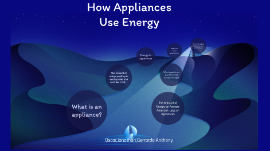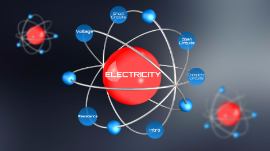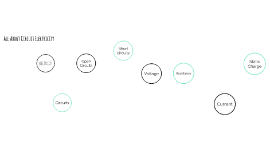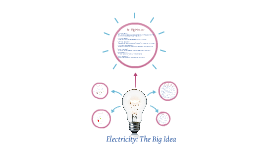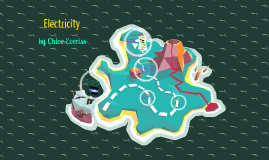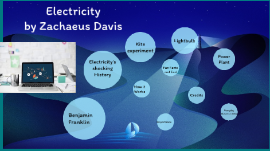Electricity Presentation
Transcript: Electricity Presentation Series and Parallel Circuits In a series circuit, components are connected end-to-end, creating a single path for current flow. Parallel circuits have multiple paths for current, allowing components to operate independently. These configurations affect voltage and current distribution. Understanding the Basics and Applications What is Electricity? Electricity is the flow of electric charge, typically through a conductor such as a wire, enabling the transfer of energy for various applications. Understanding Ohm's Law Ohm's Law describes the relationship between current, voltage, and resistance in a circuit. It states that current is directly proportional to voltage and inversely proportional to resistance. This fundamental law is crucial for analyzing and designing electrical circuits. History of Electricity The history of electricity dates back to ancient civilizations, with significant contributions from scientists like Alessandro Volta, Michael Faraday, and Thomas Edison. Introduction to Electricity Understanding Electrical Circuits Electricity is the flow of electric charge, a fundamental form of energy that powers our modern world. Electric circuits can be connected in series or parallel, impacting the flow of current and voltage distribution. This fundamental concept underlies the functionality of various electrical systems. Importance of Electricity in Modern Society Electricity Consumption Trends Global electricity consumption has been steadily increasing, with the demand projected to rise further due to population growth, industrialization, and technological development. Electricity is vital for modern society, powering homes, industries, transportation, and communication systems, driving economic growth and technological innovation. Challenges of Electrical Grids Renewable Energy Transition The aging infrastructure of electrical grids poses challenges in ensuring reliable electricity supply, prompting investments in grid modernization and smart technologies for efficient energy distribution. The shift towards renewable energy sources is gaining momentum globally, with solar, wind, and hydropower playing a significant role in reducing the environmental impact of electricity generation. Voltage and Resistance Conductors and Insulators Applying Ohm's Law Exploring Kirchhoff's Laws Voltage is the difference in electric potential between two points in a circuit, measured in volts. Resistance is the opposition to the flow of current, measured in ohms. Conductors are materials that permit the flow of electricity, while insulators prevent it. Metals are good conductors, while rubber and plastics are common insulators. By applying Ohm's Law, engineers and electricians can calculate various parameters in a circuit, such as current, voltage, and resistance. This calculation enables them to predict the behavior of components and ensure proper functionality in electrical systems. Kirchhoff's Laws, specifically Kirchhoff's Current Law and Kirchhoff's Voltage Law, are fundamental in analyzing complex electrical circuits. These laws help maintain energy conservation and provide a systematic approach to solving circuit problems. Basic Concepts of Electricity Electricity Generation Electricity can be generated from a variety of sources, including fossil fuels, nuclear, wind, solar, and hydroelectric power. In 2019, the global electricity generation from renewable sources reached 28.8% of the total, showing a significant shift towards cleaner energy options. Applications of Electricity Electric current, voltage, and resistance are fundamental concepts in electricity. Understanding these principles is essential for grasping the workings of electrical systems. Electricity generation is essential for powering various electrical appliances and is increasingly shifting towards renewable energy sources for sustainability. Renewable Energy Sources Sustainable Practices Fossil Fuel Generation Renewable energy sources such as solar and wind power offer sustainable alternatives to fossil fuels. For instance, wind power capacity has been growing globally, with China, the U.S., and Germany leading in wind energy production. Promoting sustainable practices in electricity generation and consumption is essential for mitigating climate change and preserving environmental resources. By embracing renewable energy sources and energy-efficient technologies, we can build a more sustainable and resilient energy future for generations to come. Fossil fuel-based electricity generation is a common method, with coal being the largest source of electricity generation worldwide. However, its contribution to greenhouse gas emissions and environmental impact raise concerns about sustainability. Electric Current Electric current is the flow of electric charge through a conductor. It is measured in amperes and is the rate of flow of electrons in a circuit. Solar Energy Hydropower Future Trends The future of electricity






